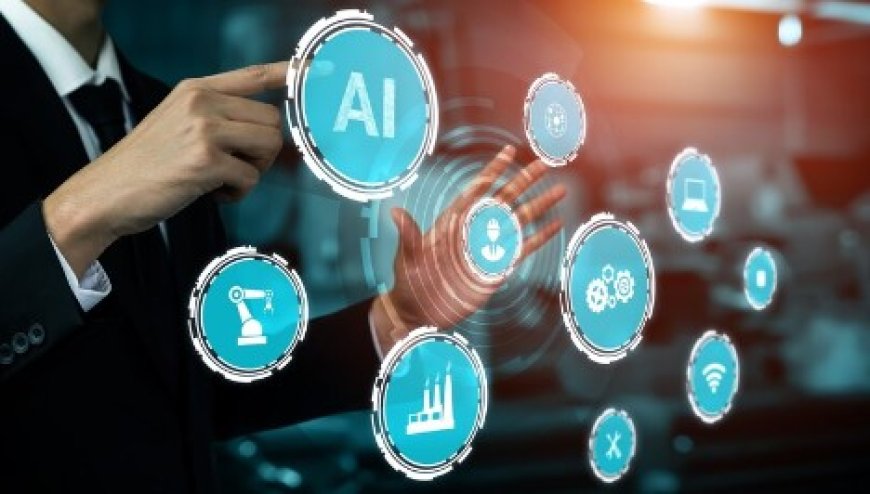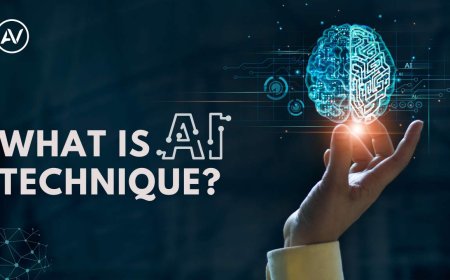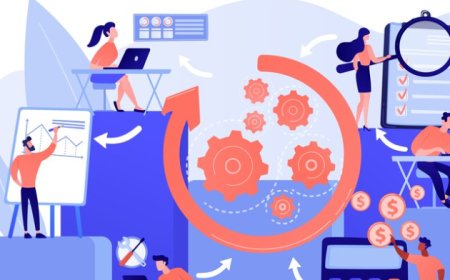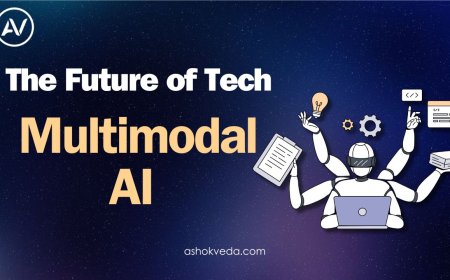Understanding AI subfields
Check out the various domains within the AI subfields. Exploring robotics, natural language processing, machine learning, and other fields.

One of the most innovative advances of the modern period is artificial intelligence (AI), which is changing industries and pushing the limits of human achievement. Artificial intelligence (AI) is the machine modeling of human intelligence processes, allowing machines to carry out activities that would normally need mental ability. Artificial intelligence (AI) affects a variety of our daily lives, transforming the way we work, communicate, and work with technology. It powers everything from virtual assistants to self-driving cars. However the area of artificial intelligence is not a single entity; rather, it involves a wide range of subfields, each focusing on another aspect of problem-solving and intelligence reproduction.
Subfields within the broad subject of artificial intelligence (AI), including robotics, computer vision, machine learning, natural language processing (NLP), and expert systems, are crucial for expanding the capabilities of intelligent systems. These subfields use computer science, data analytics, and state-of-the-art algorithms to address challenging problems and promote industry innovation. In this blog, we set out to explore the definition of artificial intelligence and its several subfields, each of which plays a unique role in shaping the field's overall environment.
The idea of artificial intelligence (AI) is becoming more and more popular in today's quickly changing technology environment, affecting every part of our lives. Artificial Intelligence (AI) has evolved from a fantasy concept to a necessary part of our everyday lives, influencing everything from the algorithms running internet search engines to the smartphones in our pockets. The need for AI-driven solutions is growing as people look for more flexibility in their technological interactions and organizations are trying to stay competitive.
But even with AI's common presence, there is common confusion about its nature and possibilities. Many people only view artificial intelligence (AI) through the eyes of science fiction, picturing sentient machines or dark scenes from popular culture. This false belief frequently hides the useful uses and practical implications of AI, creating a knowledge gap about its actual capabilities and constraints. Therefore, it is imperative to simplify artificial intelligence (AI), clarifying its definition and the several subfields that together make up this dynamic field.
Common misunderstandings about AI and its subfields
-
AI and human-like intelligence are synonymous: A prevalent mistake is that artificial intelligence (AI) aims to fully imitate human intelligence. In actuality, artificial intelligence (AI) refers to a variety of tools and methodologies, from simple rule-based systems to complicated algorithms for machine learning, each with unique strengths and weaknesses.
-
AI Will Replace Human Jobs: It's widely believed that AI will completely replace human labor, resulting in mass unemployment. Even while AI can automate repetitive jobs, it frequently improves rather than completely replaces human abilities. Furthermore, AI opens up new career paths in disciplines like data science, AI engineering, and human-AI cooperation.
-
Every AI System Is Autonomous and Self-aware: A prevalent error is that AI systems are independent and self-aware, much like humans. Most AI systems, on the other hand, are programmed to do specific tasks and are not capable of consciousness or autonomous decision-making.
-
AI is Infallible and Error-free: Is AI Perfect and Error-Free? According to some, AI is infallibility and error-free since it continually produces correct results. In actuality, AI systems may produce results that are potentially incorrect because of biases, errors, and limits present in the data they were educated on.
-
AI is Always Objective and Impartial: Despite prevalent misunderstandings, AI systems are subject to biases found in their training sets, which can result in unfair or biased results. AI algorithms raise ethical issues in a variety of applications because they have the potential to reinforce or compound prejudices in society if they are not carefully designed and evaluated.
-
All AI Subfields are Interchangeable: There is a misunderstanding that all artificial intelligence subfields are interchangeable and have comparable functions. In actuality, each subfield like computer vision, natural language processing, and machine learning specializes in different tasks and calls for specialized knowledge and methods.
-
AI Will Soon Reach Highly Intelligent: Some negative stories paint AI as an existential threat, implying that it will eventually outsmart humans and become an uncontrolled threat. Although the idea of artificial genius is being investigated by researchers, it is still theoretical and unlikely that such powers would be attained.
What are the different subfields within AI?
-
Machine Learning (ML): ML is the study of creating algorithms that let computers learn from data and get better at what they do over time without having to be explicitly programmed. For problems like classification, regression, clustering, and pattern recognition, it covers methods like supervised learning, unsupervised learning, and reinforcement modeling.
-
Natural Language Processing (NLP): Natural language processing, or NLP, is the study of how computers and human languages interact to allow machines to produce, understand, and interpret human language. Speech recognition, identified entities, language translation, text analysis, and sentiment analysis are examples of subtasks.
-
Computer Vision: Training robots to take in and understand visual data from the outside world in a manner akin to how people view and analyze photos or films is known as computer vision. Object identification, picture segmentation, image classification, facial recognition, and autonomous driving are a few examples of applications.
-
Robotics: Robotics combines artificial intelligence (AI) methods with mechanical systems to produce intelligent devices that can carry out activities fully or partially on their own. Robot thinking, motion planning, manipulation, human-robot interaction, and swarm robotics are subfields in robotics.
-
Expert Systems: By trapping human expertise in a rule- or knowledge-based system, expert systems replicate human decision-making skills in particular domains. In fields like health, finance, and engineering, they use rules, logic, and reasoning procedures to offer suggestions, diagnoses, or answers.
-
Neural Networks: A family of AI algorithms modeled after the structure and operation of the linked neurons that make up the human brain. They are utilized in deep learning tasks, which involve understanding complicated patterns and relationships in data by utilizing several layers of connected nodes.
-
Genetic Algorithms: Genetic algorithms are methods of optimization that draw inspiration from natural selection and genetics. Particularly in search and optimization activities, they iteratively generate a population of candidate solutions to identify the best answer for a given problem.
-
Fuzzy Logic: Compared to standard binary logic, fuzzy logic deals with reasoning under unclear and imprecision, enabling more flexible and nuanced decision-making. It is used in decision support systems, control systems, and pattern recognition applications where exact numerical values might not be accessible.
Artificial intelligence (AI) is changing the world in several ways, including powering common electronics and propelling large enterprises forward. Artificial intelligence (AI) is a broad field that includes many different technologies and techniques, each with specific advantages and uses. It is not limited to building machines that can think like humans. Contrary to popular belief, artificial intelligence (AI) exists to better our lives and our capabilities, not to replace us. By understanding the various subdomains of artificial intelligence and clearing up misunderstandings, we may responsibly utilize its potential and create a more inventive and optimistic future.





































